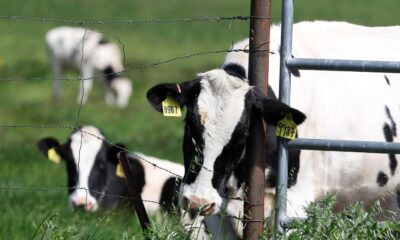Food
Bird flu found in another farm worker in Michigan

For the third time this year, it has been reported that a human has been infected with bird flu.
The Michigan Department of Health and Human Services (MDHHS) announced Thursday afternoon that there was an additional case of influenza A (H5) in a Michigan farmworker who worked closely with influenza A (H5)-positive cows.
This laborer worked on a different farm than the first Michigan case announced on May 22. The Centers for Disease Control and Prevention (CDC) continues to believe that the risk to the public remains low; this farm worker was quickly given antiviral drugs and is recovering from respiratory symptoms.
This virus has been linked to the ongoing multi-state outbreak of influenza A (H5N1). As part of the ongoing response, state and local public health are closely monitoring for possible human cases, which have occurred sporadically in individuals who had close contact with infected animals. It is not unexpected that extensive testing identifies sporadic human infections in farm workers.
“Michigan has led the way in a rapid public health response, and we have been closely monitoring this situation since influenza A (H5N1) was detected in Michigan poultry and dairy herds. Farmworkers exposed to affected animals have been asked to report even mild symptoms, and testing for the virus has been made available,” said Dr. Natasha Bagdasarian, chief medical officer.
“In the first case in Michigan, eye symptoms occurred after a direct splash of infected milk into the eye. In this case, respiratory symptoms occurred after direct exposure to an infected cow. Neither person was wearing full personal protective equipment (PPE). This tells us that direct exposure to infected livestock poses a risk to humans and that personal protective equipment is an important tool in preventing the spread among individuals working on dairy and poultry farms. We have seen no signs of ongoing human-to-human transmission, and the current health risk to the general public remains low.”
(To sign up for a free subscription to Food Safety News, click here.)













